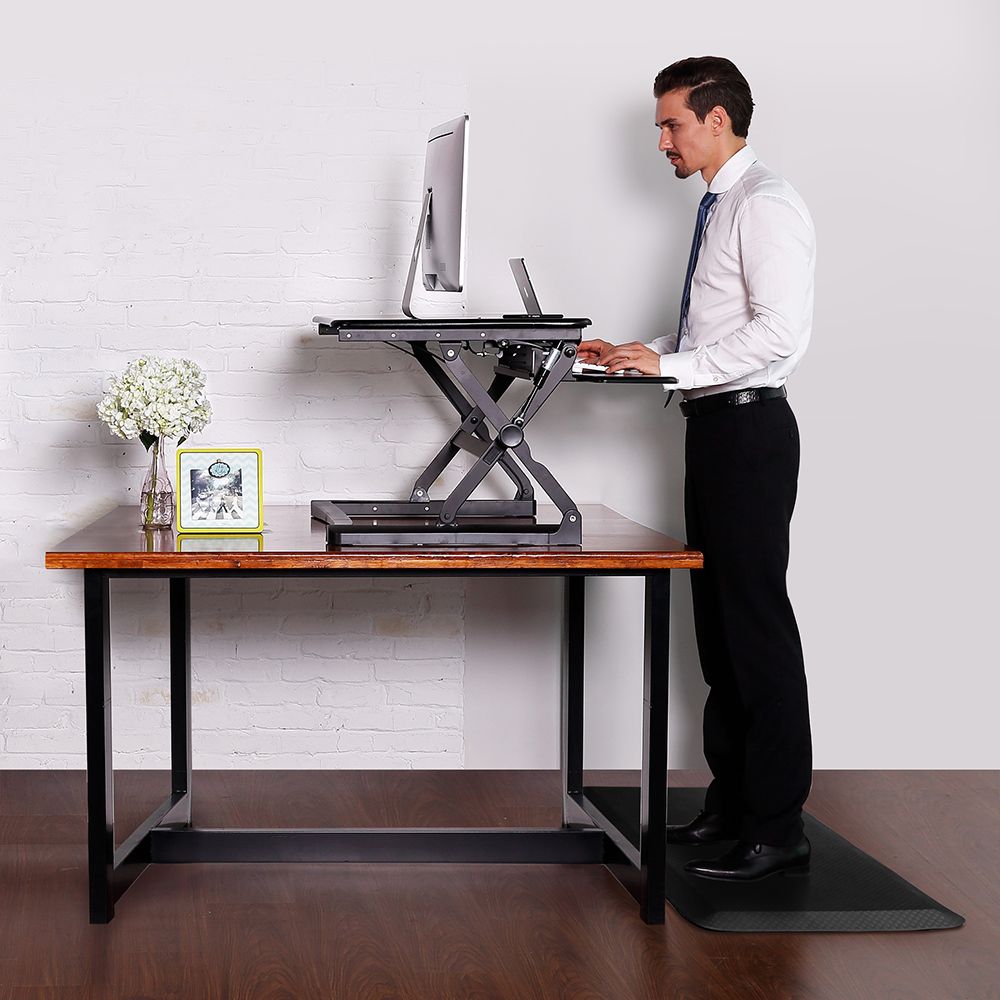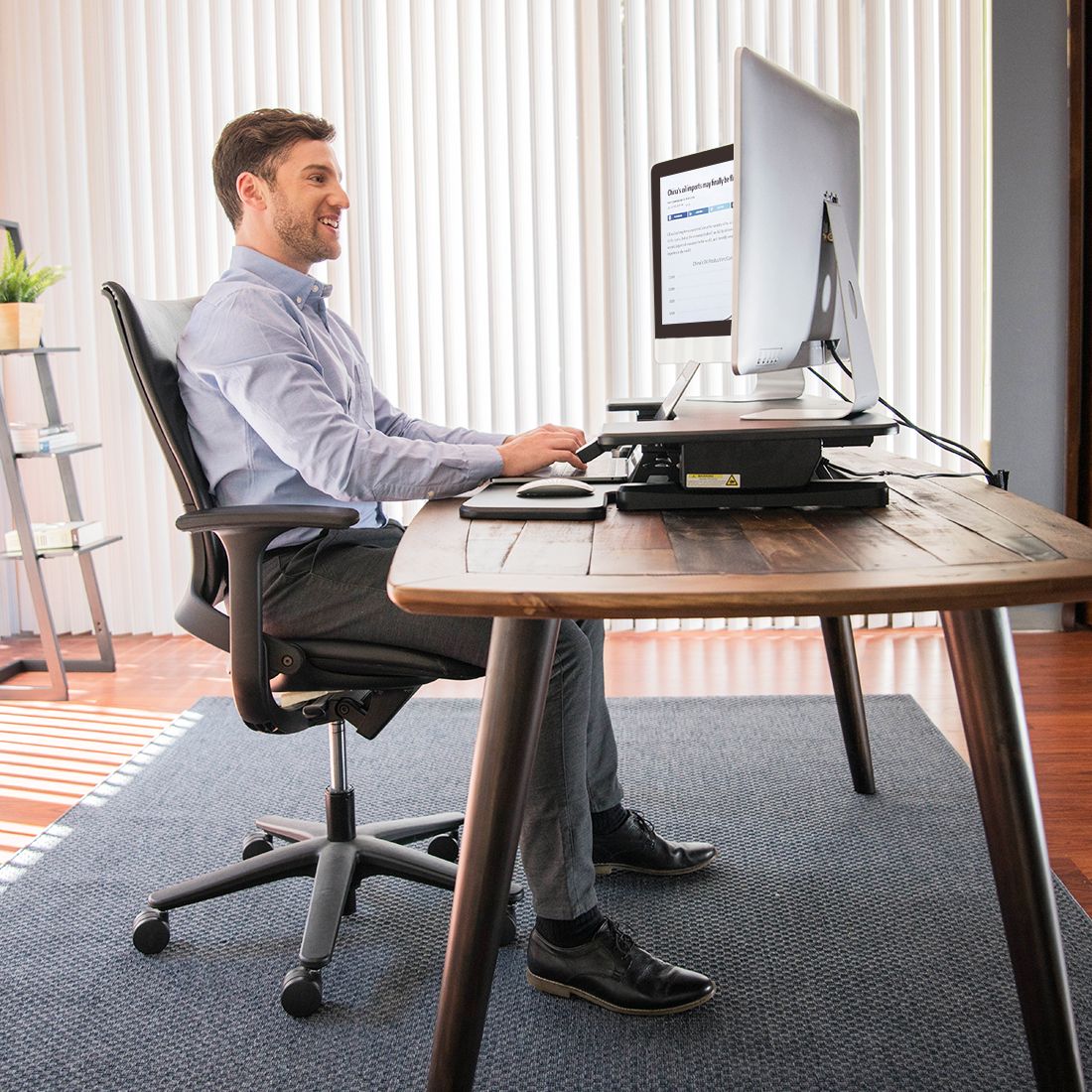It’s a great day! Your brand new standing desk just arrived, and you’re ready to put an end to your sedentary workstyle so you can enjoy all the health benefits of working at a standing desk.
But, before you dive right in, it’s important to acknowledge that your standing desk can only live up to your ergonomic expectations if you use it correctly. Poor posture and bad habits will have you in the same unhealthy boat you were in when using a sit-down desk. So, let’s review the basics of proper ergonomics so you can reap the rewards of working at a standing desk.
The Best Way to Stand
- Use an Anti-Fatigue Mat: Veteran standing desk users swear by anti-fatigue mats. These super cushioned floor mats help ease leg, foot, and lower back fatigue and pain whenever you stand for extended periods.
- Wear Comfortable Shoes: If you love to wear high heels or other less than comfortable dress shoes to work, keep a comfortable pair of shoes below your desk that you can switch into while standing.
- Maintain Proper Neck & Elbow Positioning: Even when you’re standing, it’s important that your computer monitor is at eye level, at least 20 to 28 inches away from your eyes and tilted at a 20-degree angle. Your elbows should also rest comfortably at a 90-degree angle while using your keyboard.

The Best Way to Sit
You won’t always want to stand while working at your standing desk, and you shouldn’t for optimal health. Experts actually recommend alternating between sitting and standing periodically to avoid muscle fatigue. Whenever you’re sitting, keep these ergonomic tips in mind:
- Viewing Your Monitor: Position yourself so that your computer monitor is at eye level and at least 20 to 28 inches away from your eyes. Also, tilt your monitor to a 20-degree angle. This will help prevent neck and eye strain. If necessary, buy an adjustable monitor armso you can perfectly position your screen whether sitting or standing.
- Using a Keyboard & Mouse: Place your keyboard and mouse at or below your elbow height. For maximum comfort, bend your elbows at a 90-degree angle while typing and using the mouse. Many people find that using a keyboard tray helps ensure their elbows and wrists are in the most comfortable position.
- Proper Chair Posture: Adjust your chair height so that your feet are flat on the floor and your legs naturally bend at a 90-degree angle. For lumbar support, make sure your back is fully supported by the back of your chair.

Now that you know how to properly use your standing desk, it’s time to set it up. If you discover you need any of the accessories mentioned in this article to achieve proper ergonomics, visit FlexiSpot.com to shop a wide selection of options.
